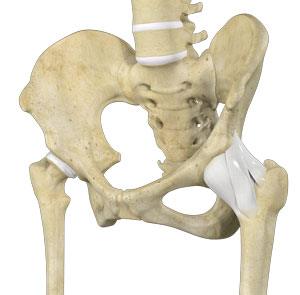
Diagnosis
Your doctor will assess your symptoms and take your medical history. Specific movements of your hip may be performed. The exact location and severity of the pain are essential to identify the type and extent of the damage. Your doctor may order an X-ray, CT-scan or MRI to confirm the diagnosis.
Treatment
Your treatment plan includes:
- A combination of non-steroidal anti-inflammatory drugs (NSAIDs) and opioids to manage pain.
- RICE method
- Rest: Avoid activities that may intensify pain and discomfort.
- Ice: Ice packs applied to the injury will help reduce swelling and pain. Ice should be applied over a towel to the affected area for 15-20 minutes, 4 times a day for several days. Never place ice directly on the skin.
- Compression: Wrapping with an elastic bandage can help minimise the swelling and support the hip.
- Elevation: Elevating your leg above heart level will also help reduce swelling and pain.
- Physiotherapy exercises to enhance your flexibility, range of motion and strength.
Surgery is recommended if you do not respond to non-surgical treatment options.
Prevention
Hip ligament injuries can be prevented by:
- Practising strengthening and stretching exercises regularly
- Avoiding rough surfaces and wearing proper shoes while running
- Avoiding participation in sports if any pain is experienced

